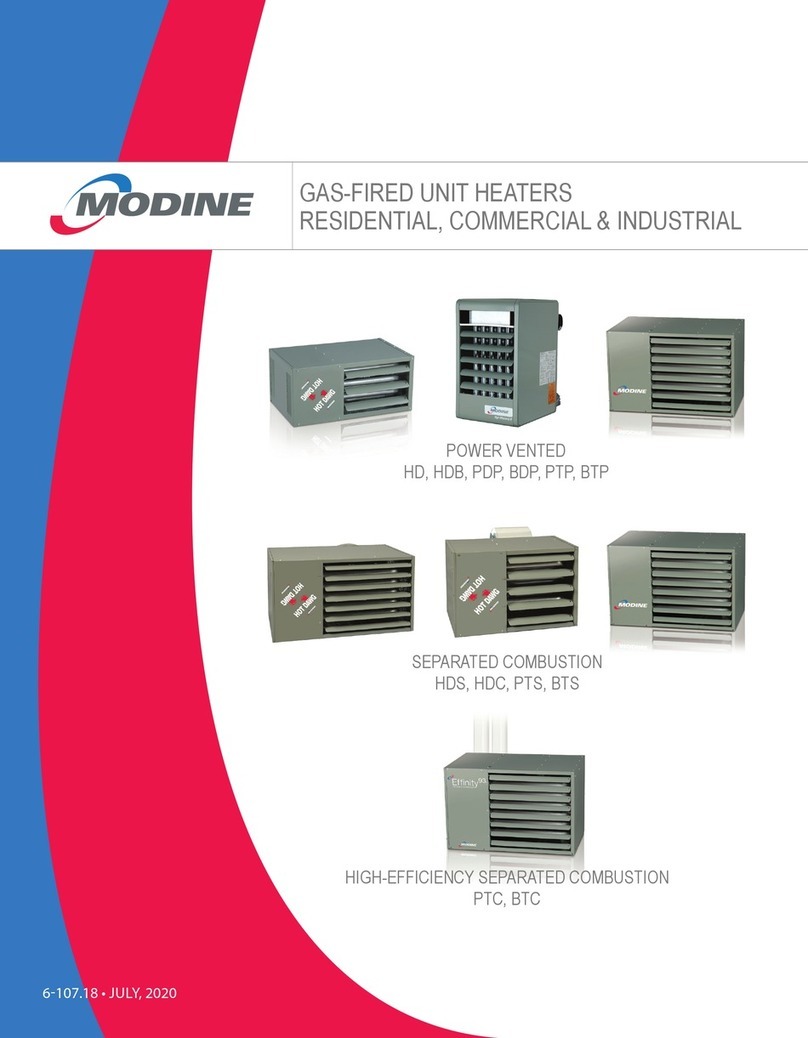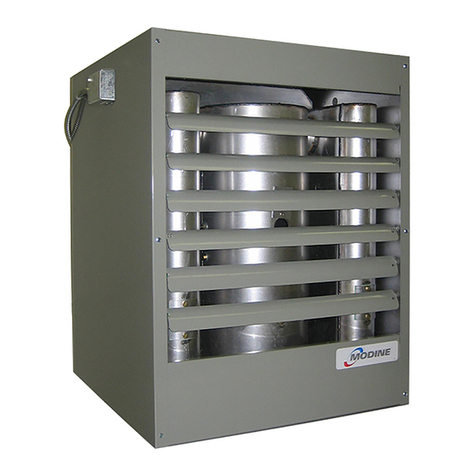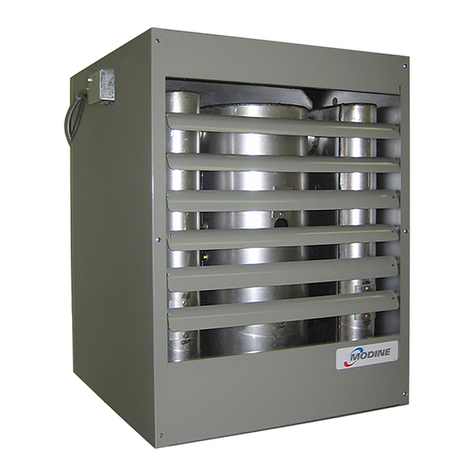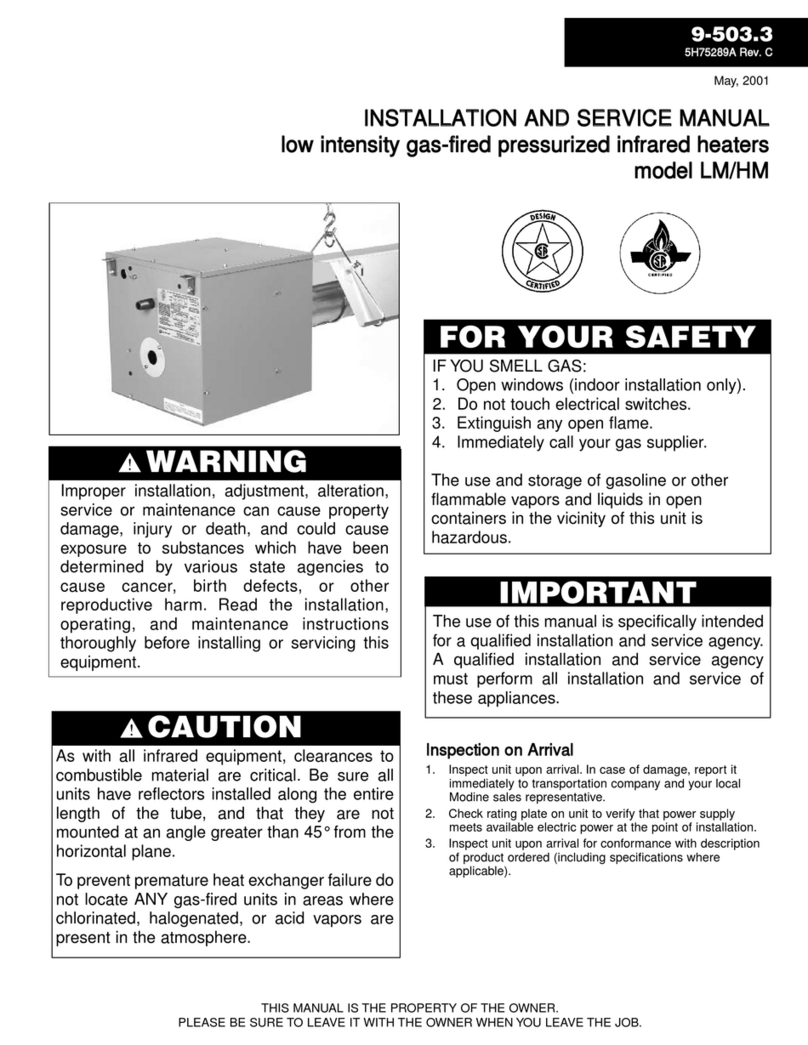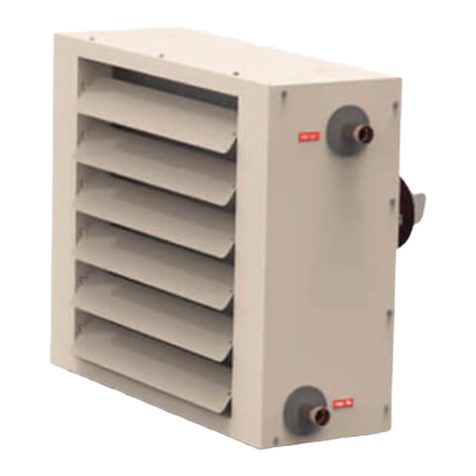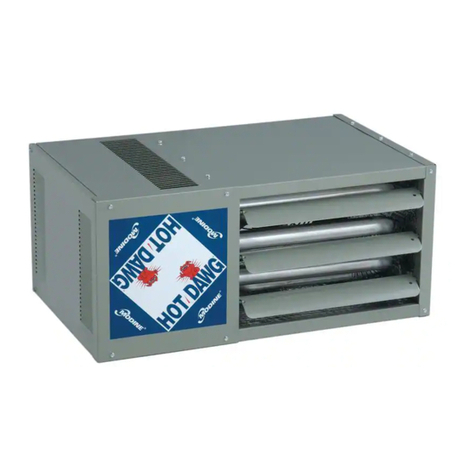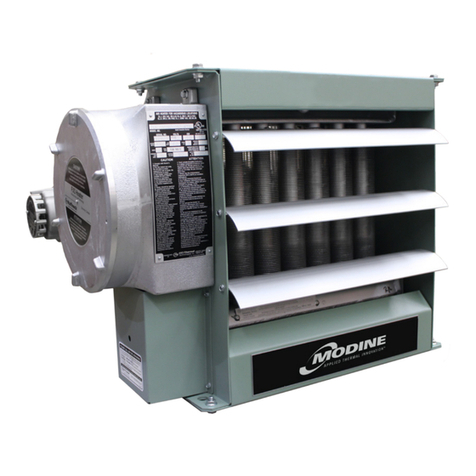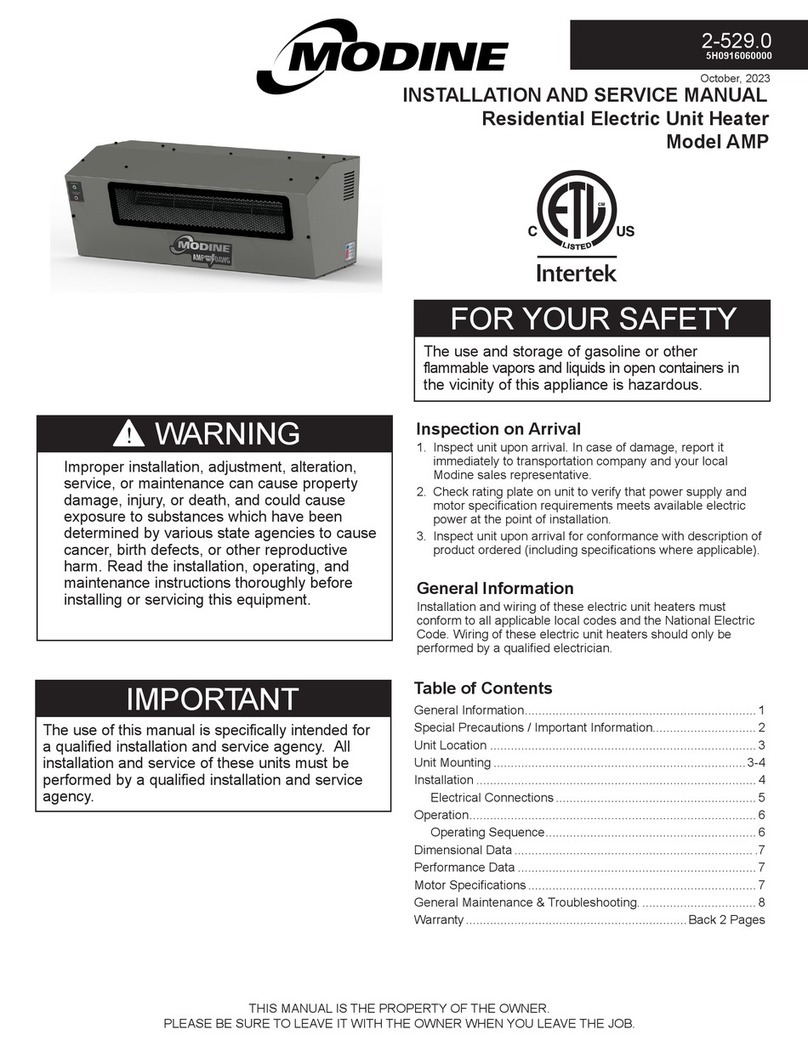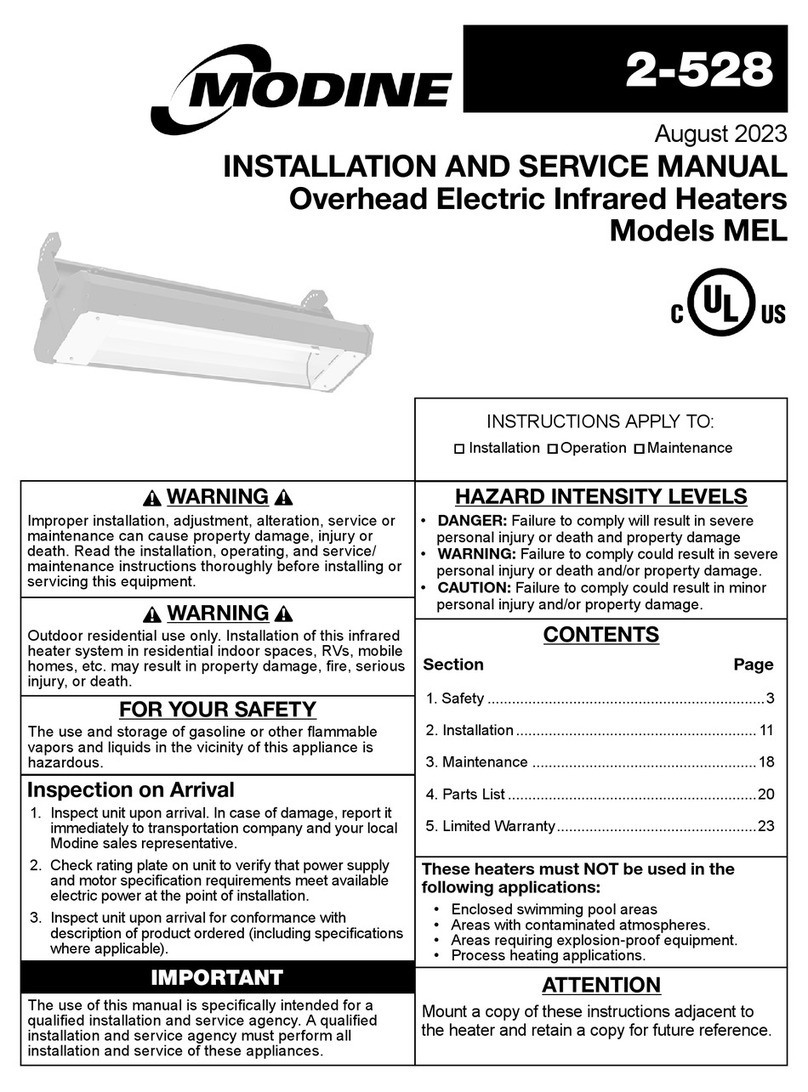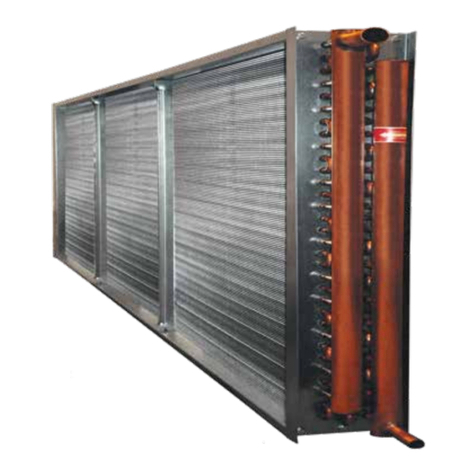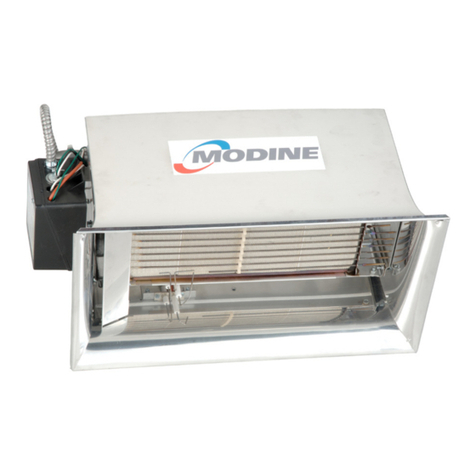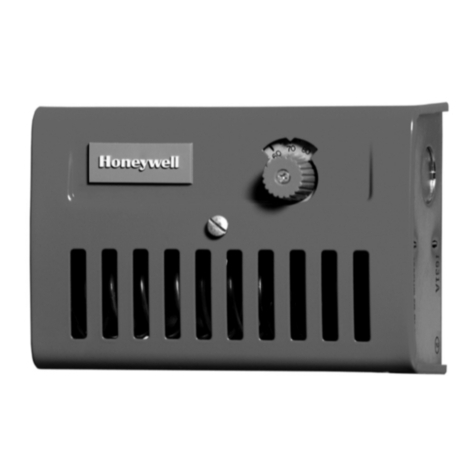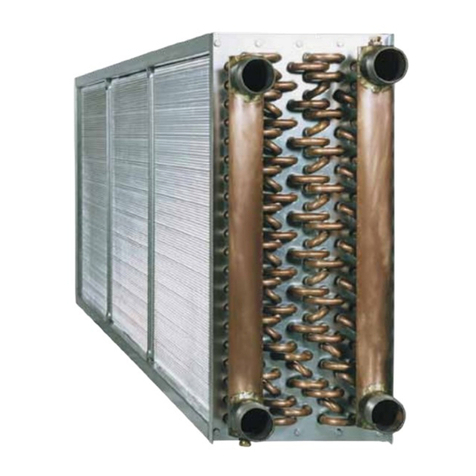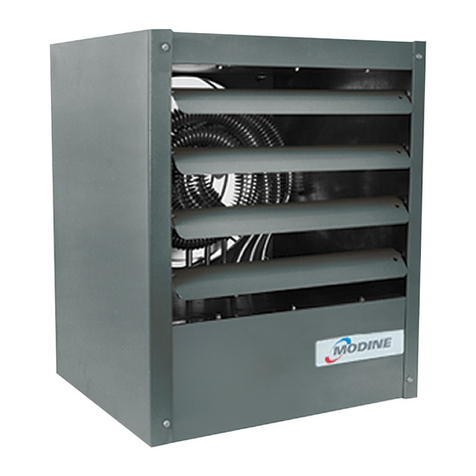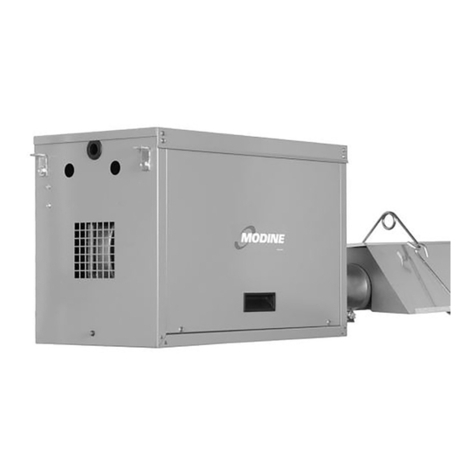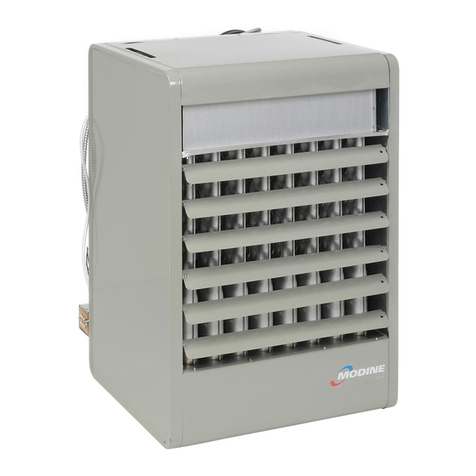
installation
SPECIAL PRECAUTIONS
1.
Disconnectpower supply before making wiring connections
to prevent electrical shock and equipment damage. All units
mustbe wired strictly in accordancewith wiring diagram fur-
nished with the unit.
2. Turn off all gas before installing unit heaters.
3.
Gas
pressure
to
unit heatercontrols must neverexceed
14
•
W.C.
Testing PipingSystem. The applianceanditsindividualshutoff
valve must be disconnected from the gas supplypiping sys-
temduring anypressuretesting ifthetest pressureisin excess
of'h
psi.
The appliance must be isolated from the gas supply piping
system by closing its individual manual shuoff valve during
any pressure testing of the
gas
supply system at test pres-
sures equal to
or
less than 1
12
psi.
4.
Check the gas supply pressure at the unit upstream from
the pressure regulator. For the purpose
of
input adjustment,
the minimum supply pressure should be 6" W.C. on natural
gas
or
11" W.C. on propane. The maximum inlet pressure
on natural gasshould be 7" W.C. and 14" W.C. on propane.
Supply pressure with any gas must never exceed 14" W.C.;
if so, install an additional pressure regulator upstream ofthe
combination gasvalve. Purging of
air
from gas lines, piping,
and lighting the pilot should be performed as described in
ANSI Z223.1 -Latest Edition National Fuel GasCode (CAN/
CGA-B149
in
Canada).
5. All units must be vented to the outside atmosphere. See
page 4 for proper venting instructions.
6.
Gas-fired heating equipmentwhich hasbeen improperlyvented,
or which experiences a block vent condition may have flue
gases accidently spilled intothe heated space. See page 20
lor
specific information about the blocked vent safetyswitch
supplied on the unit.
7.
Do not install
in
potentially explosive
or
flammable atmo-
spheres laden with grain dust, sawdust, or similar air-borne
materials. In such applications a blowertype heater installed
in a separate room with dueling to the dust-laden room is
recommended.
8. Installation
of
units in high humidityorsaltwater atmospheres
will cause accelerated corrosion resulting in a reduction of
the normal life span of the units.
9. To prevent premature heat exchanger failure do
not
locate
ANY gas-fired
unit
in areas where chlorinated, haloge·
nated or acid vapors are present in the atmosphere.
10. Avoid installing units
in
extremelydrafty locations. Draftscan
cause burner flames to impinge on heat exchangers which
shortens life. Maintain separation between unitsso discharge
from one unit will not be directed into the inlet of another.
11
.Do not locate units
in
tightly sealed rooms
or
smaflcompart-
ments without provision for adequate combustion air and
venting. Combustion air must have access to the confined
spacethrough a minimum oftwo permanentopenings in the
enclosure, one near the bottom. They should provide a free
area of one square inch per 1
000 BTU per hour input rating
of the unit with a minimum of 100 square inches for each
opening, whichever is greater.
©MODINE
MANUFACTURING
CO.
13.
Do not locate unit closer to combustible materials than 6
inchestotop and flue pipe, 18inchesto sides, and 12 inches
to bottom.
14. Allow
at
least 6"clearance atthe sides and 12"clearance at
rear to provide ample air for combustion and proper opera-
tion of fan.
15. The minimum distance from combustible material is based
on the combustible material surface not exceeding 160°F.
Clearance from the top of
the
unit may be required
to
be
greaterthan 6" if heatdamage, otherthan lire, mayoccurto
materials abovethe unit heateratthetemperaturedescribed.
16.
Do not install units below 7 feet measured from the bottom
of the unit to the floor.
17. Modine unit heaters are designed to be used for heating
applications with ambient temperatures between
3~F
and
90°F. If an application exists where ambient temperatures
can be expected to fall outside of this range, contact factory
for recommendations.
18.
Provide clearance for opening hinged bottom for servicing.
See Figure 2. Do not set unit on its bottom.
19.
Toassure thattheflames do not impingeonheatexchanger
surfaces, the unit must be suspended in a vertical and level
position. Failure
to
suspend unit properly may shorten the
life of the unit heater. ·
20. Do not lift unit heater by gas controls
or
gas
manifold.
21. Be sure no obstructions block
air
intake and discharge of
unit heater.
22. Do not attach duct wok, air filters,
or
polytubes to any pro-
peller (PAIPAE) model unit heaters.
23.1n aircraft hangars, keep the bottom
of
the unit
at
least 10'
from the highest surface
of
the wingsor engine enclosure of
the highest aircraft housed in ttie hangar and in accordance
with the requirements
of
the enforcing authorityand/orNFPA
No. 409, Latest Edition.
24.
In
garages or other sections
of
aircraft hangers such asof-
fices and shopswhichcommunicate
with
areas
used
forservicing
or storage, keep the bottom of the unit
at
least 7' above the
floor. In public garages, the unit must be installed in accor-
dance with the Standard for Parking Structures NFPA No.
88A and the Standard for Repair Garages NFPA No. 88B.
In
Canada, installation of unit heaters
in
airplane hangars
must
be
in
accordance with the requirements of the enforc-
ing authority and
in
public garages. in accordance with the
current CAN/CGA-B149 codes.
25. Consultpiping, electrical, andventing instructions
in
this manual
before installation.
26. All literature shipped with your unit should be kept for future
use for servicing or service diagnosis. Do not discard any
literature shipped with your unit.
